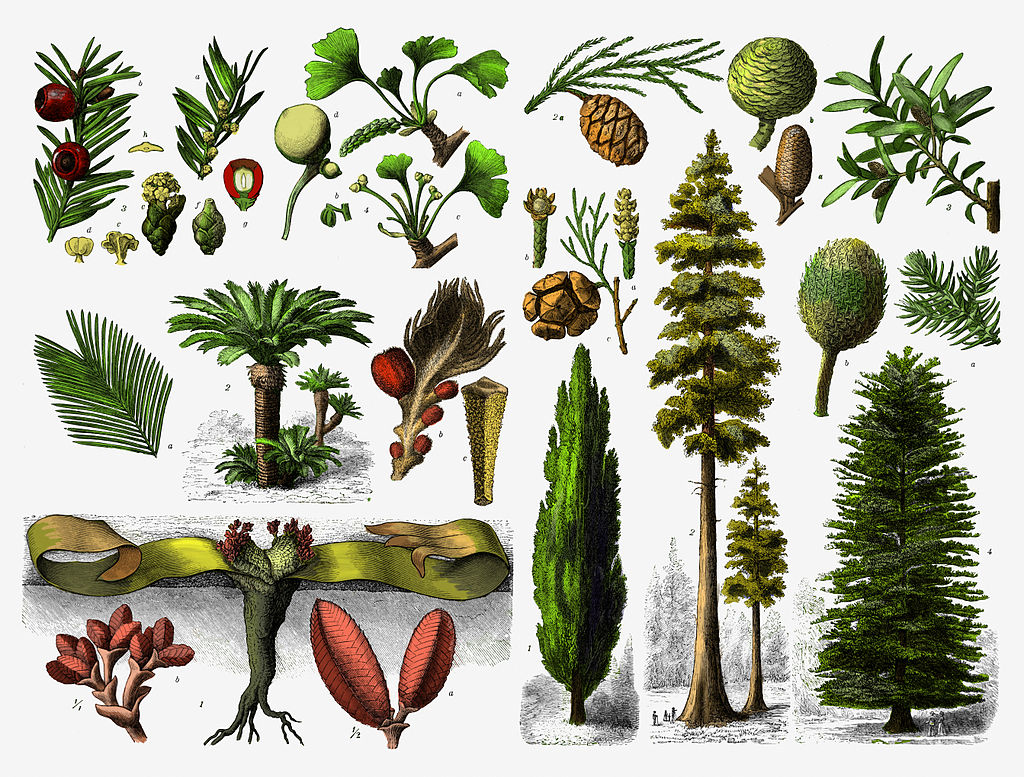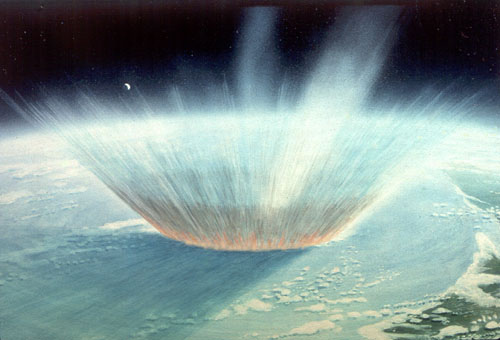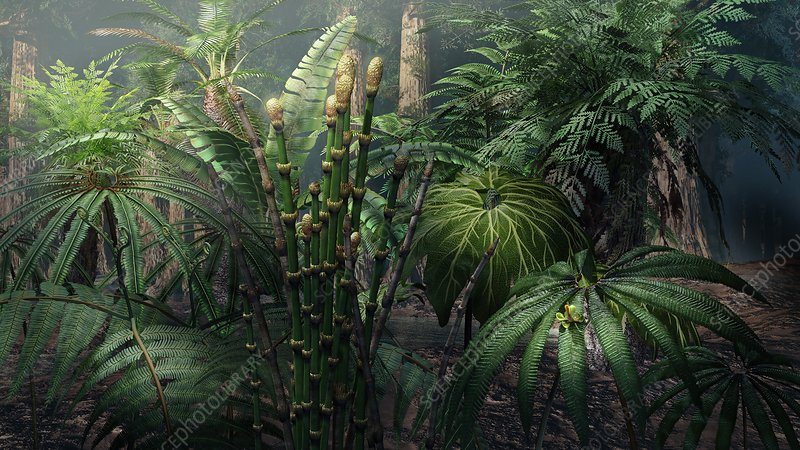The arid, continental conditions characteristic of the Triassic steadily eased during the Jurassic period, especially at higher latitudes; the warm, humid climate allowed lush jungles to cover much of the landscape. Below is all the information you need to be prepared for the flora of the Jurassic

Land Plants
Gymnosperms were relatively diverse during the Jurassic period. The Conifers, in particular, dominated the flora, as during the Triassic; they were the most diverse group and constituted the majority of large trees. The enormous sauropods likely devoured tremendous amounts of foliage each day, probably mainly these conifers.
Other land plants included Ginkgophytes (like Ginkgos), club mosses, horsetails, ferns, seed ferns, Sphenopsids (like Neocalamites), Filincophyta (like Matonidium), Cycadeodia (like Otozamites, Ptilophyllum, and Cycadeoidea), and cycadophytes.
The many smaller and medium-sized dinosaurs that lived during this time, such as the Stegosaurus, would have browsed on low-lying plants, like seed ferns, ferns, horsetails, club mosses, and low-lying conifers.

"Firsts"
Flowering plants first evolved during the late Jurassic period. This development would soon change the face of the Earth.
In the oceans, modern coralline algae appeared for the first time. However, they were a part of another major extinction that happened within the next major time period.
